- Home
- P. D. James
Time to Be in Earnest Page 3
Time to Be in Earnest Read online
Page 3
Elaine was at that time married to Hugh Carleton Greene, Director General of the BBC, and after reading my manuscript she had gone with him to have lunch or dinner—I forget which—at All Souls College, Oxford. There she had sat next to Charles Monteith, a Director of Faber and Faber. Elaine, an enthusiast for detective fiction, had said how sad she was at the death of the crime writer Cyril Hare, whose novels, mostly set in the world of law, are some of the most elegantly written in the genre. One, Tragedy At Law, is in my view among the most enjoyable classical detective stories. Charles Monteith said that Faber would now start looking for a replacement for Cyril Hare, and Elaine told him that she thought she had found one. She sent the manuscript to him next day and Charles accepted it. I think this success produced some unease among my daughters, who had read that any writer of real talent could paper his or her walls with rejection slips. They tactfully pointed this out, anxious to arm me against future disappointment. I retorted with some tartness that children with no faith in Mummy’s talent would not get new bicycles out of the proceeds. A couple of extremely good bicycles as well as other small treats constituted for me financial success.
I have remained with Faber and Faber ever since, and remained also with Elaine until her death. After that her younger partner, Carol Heaton, took over and I am more than happy to be in her hands.
I can remember the moment of that telephone call with great clarity. I was late home from work and returned as usual to an empty house. My husband was in Goodmayes Hospital, the children both away and my parents-in-law had retired to Suffolk. The telephone rang almost as soon as I unlocked the door. Elaine had been trying to get me earlier and had made one last attempt. Receiving the news that I was at last to be a published author was one of the most exciting moments of my life, far more exciting, in retrospect, than receiving the first six free copies of the novel. It would have been good to have someone with whom to share the news, but I don’t recall that this mattered at the time. It was sufficient to know that I was going to be a novelist. I knew that evening, as I pranced up and down the hall, that people do literally jump for joy.
There was one disappointment. The book was due to be published in 1961, the following year, but I received a letter to say that Faber’s fiction list was too large and that my novel was being deferred for twelve months. At the time the wait seemed insupportable, but at least it gave me an added incentive to make a beginning on my second novel with quiet confidence that it would stand a chance of acceptance.
TUESDAY, 5TH AUGUST
This morning I caught the 11:30 train from Liverpool Street to come to Southwold where this evening I was engaged to speak to the Southwold Archaeological and Natural History Society. The venue was a room on the pier. I was met at Darsham station by Steve, who normally drives me when I come to Southwold. I have been familiar with the East Coast since childhood. After the First World War my father purchased one of the large army bell tents and this would be erected on the cliff at Pake-field, just south of Lowestoft. Here under brown flapping canvas we would spend two weeks each summer, the five of us sleeping with our feet towards the pole like the spokes of a wheel. It was fun for us children but hardly a holiday for our mother. But then I can’t remember her having a proper holiday during all her married life.
Suffolk is not the loveliest of English counties, its beauties less accessible, less dramatically beautiful than more famous parts of England, but I early grew to love the great skies, the sense of space, the bird-loud estuaries and the churches.
I have used East Anglia as a setting for a number of my novels, the last example being Devices and Desires. The book had its genesis when I was exploring Suffolk with an elderly long-standing friend, Joyce Flack, who drove me in her ancient Mini. I stood for a few minutes alone on a deserted stretch of shingle and looked over the cold and dangerous North Sea. I remember that there were two wooden fishing boats scrunched into the shingle and some brown nets strung between poles, drying in the wind. Closing my eyes, I could hear nothing but the tinny rattle of the shingle drawn back by the waves and the low hissing of the wind, and I thought that I could have been standing on the self-same spot a thousand years ago, hearing the same sounds, looking out over the same sea. And then I opened my eyes and, looking south, saw the silent and stark outline of Sizewell nuclear power station dominating the coastline. I thought of all the lives that have been lived on this shore, of the windmills, once providers of power, now prosperous homes, of the ruined abbeys at Leiston and South Cove which seemed like monuments to a decaying faith, of the detritus of my generation, the great lumps of concrete half embedded in the shingle, and the concrete pillboxes, part of the defences against the expected German invasion on this coast. And immediately I knew with an almost physical surge of excitement that I had a novel. The next book would be set on a lonely stretch of East Anglian coast under the shadow of a nuclear power station. The book, at present no more than a nebulous idea born of a moment in time and a specific place, might take more than a year to research and plan and the writing even longer, but already it has life.
The Southwold house which I bought in July 1995 enclosed me as I entered it with a sense of welcoming peace. Brian Duncan, the builder, has removed the cumbersome and difficult-to-operate gas fire in the sitting-room and opened the fireplace. It now looks much as it must have done when the house was built in the seventeenth century. He managed to find old bricks to line it and an oak beam for the lintel, which matches the beams in the ceiling.
The lecture this evening was appropriately on the use of place in fiction, a title which seemed to me to relate only remotely to the concerns of the Society although this, they had told me, was not a problem. The atmosphere of indulgent holiday expectancy was helped by the constant sound of the sea splurging against the pier. I illustrated the talk with examples of the way setting is used in fiction: to create mood and atmosphere; as an aid to characterization; to root the action in the firm soil of a recognized place, thus aiding credibility, and to provide that contrast which, in crime fiction, can enhance horror as well as providing a relief from it. Setting can also have a symbolic importance, as does the black tower in my novel of that name and the nuclear power station in Devices and Desires.
The talk was followed by twenty minutes of questions and discussion. One question which I can be sure of getting, and did so this evening, is: Why are women writers pre-eminent in the field of crime fiction? I reply that if we are surveying the whole field of crime writing, then it’s hardly accurate to say that we are. Even if we consider only the detective story, I think it is still arguable that the sexes may be more equal than is sometimes alleged. Even so, many people, asked to name writers of detective fiction, would begin with Agatha Christie and probably go on to Dorothy L. Sayers, Margery Allingham, Ngaio Marsh and, today, Ruth Rendell and a score of other well-known women crime writers here and in the United States. Some of the greatest novelists writing in English have been women: Jane Austen, the Brontës, George Eliot, Virginia Woolf. As women’s creativity seems to find a natural outlet in fiction, it’s not surprising that women should be attracted to fiction’s most popular form.
And women have, I think, natural advantages, particularly that eye for detail, for the minutiae of everyday living, which is so important in clue-making. George Orwell has said that murder, the unique crime, should arise only from strong emotions, and here too women can be pre-eminent since they have a greater interest in those strong emotions than they have in violence or weaponry. I expect, too, that women find the conventions and the form both satisfying and supportive. Thus psychologically buttressed, we can deal with violent events and emotions with greater security than we could in any other form of fiction. The detective story is, after all, one way in which we can cope with violent death, fictionalize it, give it a recognizable shape and, at the end of the book, show that even the most intractable mystery is capable of solution, not by supernatural means or by good fortune, but by human intelligence, human persever
ance, and human courage.
I’ve been considering the question since my return home. According to Julian Symons in his book Bloody Murder, the first authentic note of the detective story proper was struck as early as 1794 in the novel Caleb Williams. Not surprisingly this is by a man, William Godwin, Shelley’s father-in-law. Certainly this novel has many of the elements of classical detection: a central mystery, physical clues, an amateur detective, a pursuit and disguise. It even foreshadows the use of this formulaic genre to say something about society which the author regards as important. As the intellectual leader of the English radical movement, Godwin believed in an ideal anarchy in which there would be no crime, no administration and no government. Hazlitt said that, once begun, it was a novel impossible to put down. Personally I find it unreadable.
I suppose most readers would award the distinction of being the first modern detective story to The Moonstone by Wilkie Collins, published in 1868, and again by a man. In my view no other single novel more clearly adumbrates the later development of the genre. Wilkie Collins created one of the earliest fictional police detectives, Sergeant Cuff, eccentric but professional, shrewdly knowledgeable about human nature, and based on the real-life Scotland Yard detective Jonathan Whicher. Collins is meticulously accurate in his treatment of medical and forensic details, there is an emphasis on the importance of physical clues, and all the clues—a paint-stained nightdress, a smeared door, a metal chain—are made available to the reader, foreshadowing the tradition of the fair-play rule whereby the detective must never be in possession of more information than is the reader. The clever shifting of suspicion from one character to another is done with great adroitness, and this emphasis on physical evidence and the cunning manipulation of the reader were both to become common. But the novel has other more important virtues as a detective story. Wilkie Collins is excellent at describing the physical appearance and the atmosphere of the setting and makes good use of the contrast between the secure and prosperous Verinder household and the eerie loneliness of the shivering sands, between the exotic and accursed jewel which is stolen, and the outwardly respectable privileged lives of upper-class Victorians.
But The Moonstone is a single book; I suppose that the credit for having, as it were, invented the detective story and laying down its main conventions has to be shared between two writers, and again both of them are male. It can be argued that, in five tales alone, Edgar Allan Poe anticipated virtually every type of succeeding detective story. The sensational thriller in The Murders in the Rue Morgue (1841), the treatment of a real-life crime combined with meticulous deduction in The Mystery of Marie Roget (1842), the tale of a secret agent in The Purloined Letter (1844), a puzzle revolving round the breaking of a code in The Gold Bug (1842) and a murder mystery solved by the narrator in Thou Art the Man (1844). Poe’s detective, Chevalier C. Auguste Dupin, is an early example of the cerebral detective, a man who solves crimes not by acts of egregious bravery or spectacular cunning, but by observation and reason.
But if the detective story was born in the United States, one could argue that it came of age in Victorian England. Conan Doyle is the creator of the most famous detective in literature. He bequeathed to the genre a respect for reason, a reliance on ratiocination rather than on physical force, an abhorrence of sentimentality and the power to create an atmosphere of mystery and Gothic horror which is yet firmly rooted in physical reality. Above all, of course, and more than any other writer, he established the tradition of the great detective, the omniscient amateur whose personal, sometimes bizarre eccentricity is contrasted with the rationality of his methods and who provides for the reader the comforting reassurance that, despite our apparent powerlessness, we yet inhabit an intelligible universe.
Then there are the more modern American writers, Raymond Chandler and Dashiell Hammett, both fine novelists, who have had an influence beyond the genre. Chandler was born in America but brought up in England and was much influenced by Hammett. Most aficionados of detective fiction would agree with Chandler that his books should be read and judged not as escapist literature, but as works of art. I would only add that I don’t see why escapist literature shouldn’t also be a work of art. Chandler would undoubtedly have deplored many of the detective stories written by women. He wrote that the English might not be the best writers in the world, but they were the best dull writers, and he inveighed against what he saw as the artificiality of the detective story, proclaiming his wish to give murder back to the people who committed it. This, of course, is to reiterate an old criticism, but in his case, I think, with little force. Chandler’s lone romantic hero striding down the mean streets, imperfect but still superior to the viciousness and savagery which surrounds him, is in his way as much a figure of fantasy as is Lord Peter Wimsey, Roderick Alleyn or Albert Campion. Women too, in the American hard-boiled novel, seem often devoid of reality. They are either patient little helpmeets tapping away at the typewriter in the office, or seductive villainesses, as irrelevant to the hero’s integrity as they are to his life.
Then there are the novelists of espionage, the best of those surely being men: Graham Greene, Eric Ambler and John le Carré, with his fascination with treachery and betrayal and his marvellously persuasive evocation of the sad bureaucracy of spying. No woman has written about international espionage with quite the same authority.
But I don’t think it is rewarding to argue over which sex is pre-eminent in the genre. And perhaps the balance is shifting. Too many male crime writers, obsessed with violence and with the search for what they, a uniquely privileged generation, see as the gritty reality which they have never personally experienced, are portraying a world as nihilistic as it is bloody. Perhaps it is to the women we must look for psychological subtlety and the exploration of moral choice, which for me are at the heart of even the most grittily realistic of crime fiction.
Tom and Mary Norman arrive tomorrow—they say shortly after five—to stay until Saturday. Tom is one of my oldest friends and one of the few who knew Connor. They met during the war when both went to Cambridge for some preliminary entrance examination before taking their B.A. courses. They were due to have a practical examination the next day and Tom suggested that they should go down to the laboratories to see if the incubators were working. If they were, at a time when energy had to be carefully conserved, it would be possible to draw up a list of probable questions. The incubators were working and Tom gave Connor a list of subjects for last-minute revision. Connor told himself, “This man is a genius and I will stay close to him all my life,” which, with a few difficult years’ intermission during the worst of Connor’s illness and when they were serving in different theatres of war, he effectively did.
I can’t remember my first meeting with Connor, but I know that it was when I was working at the Festival Theatre in Cambridge. I was assistant box office manager, assistant stage manager, and indeed assistant to anyone who needed a willing if inexperienced factotum. I had finally said goodbye to my first disastrous job in the tax office at Ely and, in taking the job at the theatre, probably had some idea that I would like to be a playwright and that this would be good experience. It was certainly experience of a kind. Connor and Tom came together to one of the performances and we met. I had no intention of asking my parents for permission to marry—parental consent was then necessary if bride or groom were under twenty-one—but we married on 8th August 1941, five days after I came of age.
I shan’t write about my marriage in this incomplete diary except to say that I have never found, or indeed looked for, anyone else with whom I have wanted to spend the rest of my life. I think of Connor with love and with grief for all he has missed: the grandchildren in whom he would have taken such joy, my success, which would have made the burden of mental illness easier to bear—as money always does—the journeys, the laughter, the small triumphs and the day-to-day living we haven’t shared. Tom Norman is one of only two friends now living who experienced with us those Cambridge days and, late
r, our move to London, the small one-bedroom flat we rented in Manchester Square which was later destroyed in the bombing, Connor’s life as a medical student. I don’t see him often enough. It is one of the penalties of fame and its concomitant over-busyness, and a matter for shame as well as regret, that our lives become ill-directed and we spend so little time with the people we love and most wish to be with.
SATURDAY, 9TH AUGUST
Tom and Mary dropped me at Darsham station this morning to catch the train before themselves driving back to Winterborne Houghton in Dorset. The visit was a happy one for the three of us.
Mary was anxious to see Somerleyton, so we drove there on Thursday. It is an extravagantly splendid example of early Victorian country-house architecture, built round a Tudor-Jacobean shell but retaining few of the original features of the old house. The particulars of sale prepared in 1861, when Sir Morton Peto was forced to sell the estate, described the Hall as “a specimen of the architecture of the Elizabethan period, transformed by the purist taste into a rich and noble example of Anglo-Italian, a rich, harmonious style pervades the whole building.” It is very much a family home, which I liked.

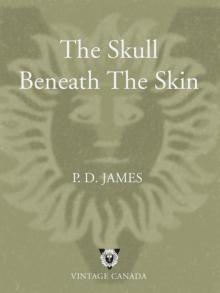 The Skull Beneath the Skin
The Skull Beneath the Skin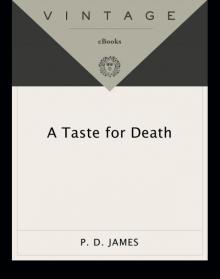 A Taste for Death
A Taste for Death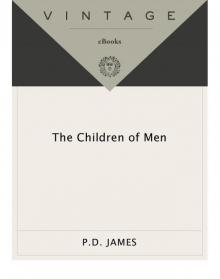 The Children of Men
The Children of Men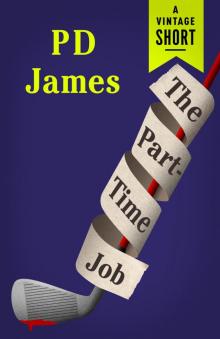 The Part-Time Job
The Part-Time Job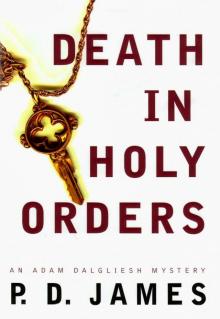 Death in Holy Orders
Death in Holy Orders The Victim
The Victim Shroud for a Nightingale
Shroud for a Nightingale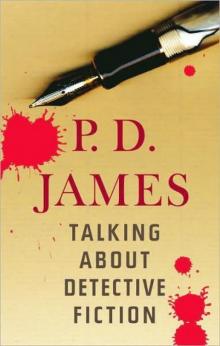 Talking about Detective Fiction
Talking about Detective Fiction Sleep No More
Sleep No More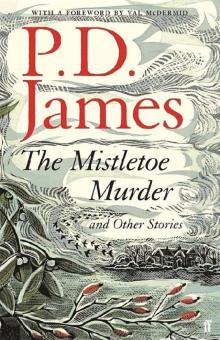 The Mistletoe Murder and Other Stories
The Mistletoe Murder and Other Stories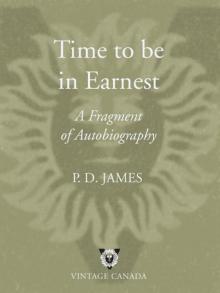 Time to Be in Earnest
Time to Be in Earnest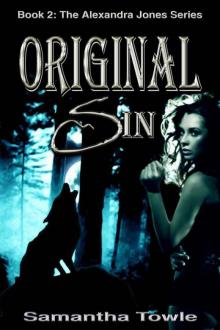 Original Sin
Original Sin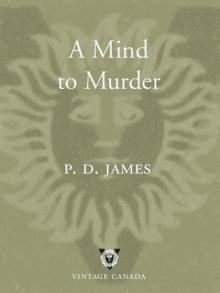 A Mind to Murder
A Mind to Murder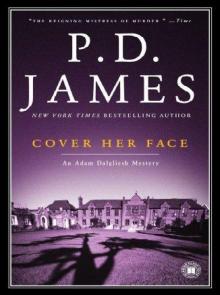 Cover Her Face
Cover Her Face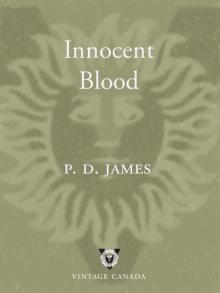 Innocent Blood
Innocent Blood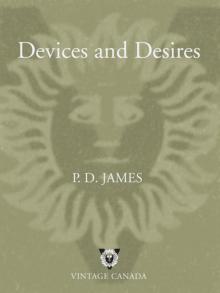 Devices and Desires
Devices and Desires Sleep No More: Six Murderous Tales
Sleep No More: Six Murderous Tales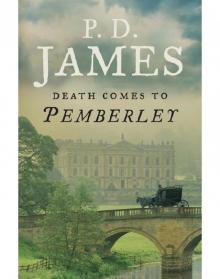 Death Comes to Pemberley
Death Comes to Pemberley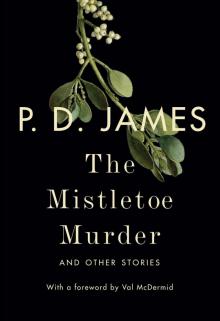 The Mistletoe Murder
The Mistletoe Murder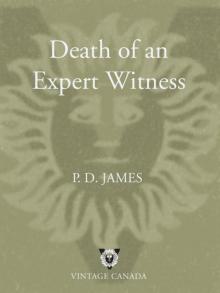 Death of an Expert Witness
Death of an Expert Witness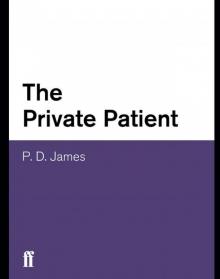 The Private Patient
The Private Patient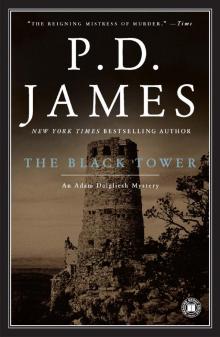 The Black Tower
The Black Tower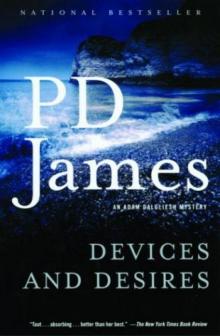 Devices & Desires - Dalgleish 08
Devices & Desires - Dalgleish 08 Unnatural Causes
Unnatural Causes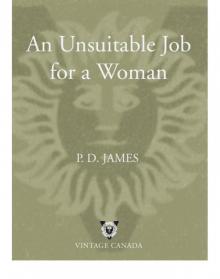 An Unsuitable Job for a Woman
An Unsuitable Job for a Woman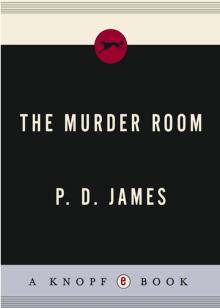 The Murder Room
The Murder Room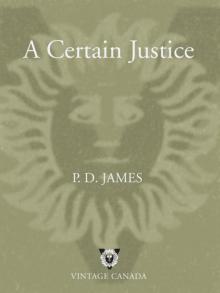 A Certain Justice
A Certain Justice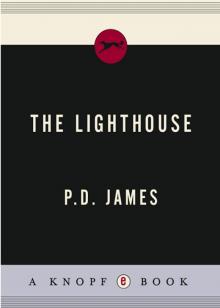 The Lighthouse
The Lighthouse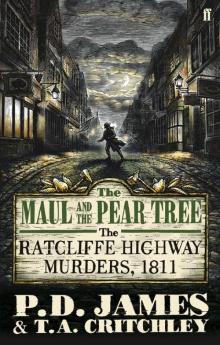 The Maul and the Pear Tree
The Maul and the Pear Tree